Coaches offer high-performing lawyers training in how to overcome their biggest obstacle: themselves.
Lawyers, as a group, are more likely to display certain traits than are other professions. Practitioners who have too few or too many of those traits may find it blocks their road to success.
When that happens, many lawyers, at various stages of their careers, turn to “lawyer coaches.” It is a coach’s role to help clients determine what stands in their way and develop strategies to reach their goals.
Canadian Lawyer explores some of the most widespread lawyer traits with several lawyer coaches, presenting true examples of how they helped their clients to adopt new behaviours. All five of the coaches interviewed for this article are non-practising lawyers who are careful to protect their clients’ identities.
 Paulette Pommells
Paulette Pommells, a Toronto coach, identifies empathy and a desire to share knowledge as positive lawyer qualities, but she has seen those traits sometimes carried to excess. “Law is a profession of helping people,” she says. “Many lawyers have an altruistic sense of wanting to help people and make a difference, but some lawyers suffer volunteer burnout if they’re helping too many people outside their paid practice.”
One such client of Pommells was a named partner in a small law firm who said yes to every request, whether from a client seeking
pro bono representation or from a law student seeking job help. “She receives two of these emails a week from law students, which over a year translates into two weeks of full-time work,” says Pommells.
The lawyer reached a point where she could no longer sustain such a schedule. The commitments totally align with the lawyer’s values, says Pommells, “but you can’t say yes to everything. Sometimes, you have to turn down paid work, too, depending on what you’ve got [in your inbox]. We are literally helping her say no.”
The coach and her client worked out a process that she can follow whenever she is asked to accept a new commitment. “She asks herself, ‘What will it entail if I say yes to this opportunity? Will it take me away from other important responsibilities that I have? Is there a way I can delegate some of my existing workload to take this on?’ She now has her own ‘Oakes test’ that she applies to any request.”
Another kind of client with whom Pommells often works is the lawyer with a surplus of critical thinking skills. “Lawyers think things through, looking at them from all sides, and relying on solid evidence or facts before making a decision or devising a strategy,” she says. For some clients, however, critical thinking has spiralled into negative thinking. A new call has engaged Pommells for help in finding an associate position. He was invited back by the small law firm where he articled, but he declined because of a senior partner with a “difficult personality.”
In his job search, the young lawyer was analyzing every position from every angle, asking himself, “Is this going to be a repeat of what I just went through?” He was also unsure how to explain to a potential employer why he left the previous firm. His fear of appearing to be “damaged goods” was preventing him from applying for any position. He was even reconsidering his original decision to study law.
Pommells worked with the client to “give himself permission to move forward,” leaving behind the negativity of the articling experience. They developed a response to the awkward question of his departure. Instead of disparaging the previous firm’s senior partner, he would specify that he wanted an area of practice unavailable to him where he articled.
To show he was serious about the new practice area, the client would do several information interviews with practitioners in that field and even take a course to help fill a gap. At press time, his job search was still underway, but the client’s anxiety level was reduced and he was no longer having an existential crisis.
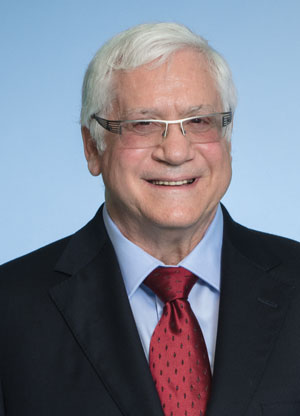 Ian Solomon
Ian Solomon, a Toronto lawyer coach who has been both a lawyer and an entrepreneur, contrasts the mindsets of the two vocations. Whereas entrepreneurs are serial risk takers, he says, most lawyers are risk averse. “They are trained to look at the downside of any proposition. They’re good at seeing obstacles to moving forward on any particular issue.”
The difference is apparent in how they react to setbacks. The entrepreneur “will pick himself up and try again,” says Solomon. “Lawyers, if they fail, don’t take disappointment very well.”
They have low resilience and may falter in their day-to-day practice. “They don’t return phone calls. They procrastinate,” he says. At its worst, depression, alcoholism and substance abuse may occur.
A coach’s role is not the same as a therapist’s, Solomon says, but coaching can be therapeutic and mitigate depression. His approach is to be “neither a professional nag nor a cheerleader.”
Instead, he aims to develop a “structure of accountability” for the client.
A Solomon client, a sole practitioner in his early 50s, was going through a divorce, had neglected his practice and was worried that he wasn’t earning and saving enough to fund retirement.
“Most lawyers are not accustomed to thinking strategically about their business,” says Solomon. “They work in the business instead of on the business. We developed a strategy for getting him more clients and better-paying work. Most lawyers don’t have a plan for that. We wrote out a plan.”
Solomon had the client identify one-year and five-year goals for revenues. Then, they decided on a set of discreet steps to achieve those goals. “We don’t try big steps,” he says. “The agreement is to do two or three items between coaching sessions. They’re challenging but not overwhelming.” And at each followup session, the client is accountable for having taken those steps.
For example, the client had to meet with three other lawyers to seek referrals of business. He also had to meet with his real estate clients at their closings and asked them for referrals.
(Solomon says he is “floored” by the number of lawyers who are reticent to ask for referrals. “There’s this fear of failure, this fear of making mistakes.”)
Accountability drives the process forward. Rather than having to reinvent the practice, the client usually just has to make adjustments, says Solomon, citingthe rule of thumb that “generally, 20 per cent of your practice brings in 80 per cent of your income.” Recognizing that, his client has shifted his practice away from family law to do more real estate and wills and estates. He’s increased his income and started to put away savings for retirement.
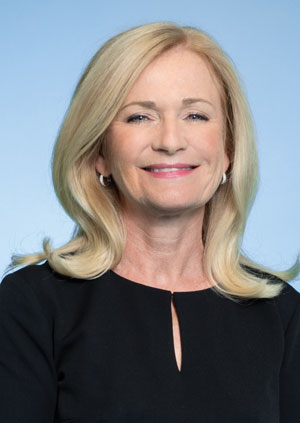 Sheena MacAskill
Sheena MacAskill, a Toronto coach, has worked with, among others, senior lawyers who were perfectionists and often berated the students, juniors and secretaries producing work for them. “They might be making unreasonable demands and inappropriate comments, raising their voice or yelling in open areas where others were present,” she says. Typically, these kinds of clients are sent for coaching by managing partners in their firms. “‘Technically, you’re a good lawyer, and we want to keep you,’ the managing partner will say. ‘But we want you to adjust your behaviour. We want you to be more collegial.’”
These lawyers usually have high IQs but low EQs — or emotional intelligence, says MacAskill. “The coaching goal is to raise their self-awareness,” she says. “They need tweaking on the interpersonal skills. Most of these clients, though not all, are aware they have a problem and want to change. They just need the tools to make the changes.”
The first step is to give the client feedback based on psychometric assessments that MacAskill administers. The second step is recognizing the triggers for their outbursts. Often, the trigger is stress-related: They may be tired or overworked.
MacAskill teaches these clients to pause, withhold their reactions and ask themselves if it’s really worth getting upset about this issue or with this person. “Once they learn to pause,” she says, “the moment passes and the outburst is averted. Invariably, they realize that the issue wasn’t worth getting upset about in the first place.”
The client then learns to shift from a “judger” to a “learner” mindset. Lawyers are taught to be critical thinkers and quick decision-makers, but they need to be curious, too, says MacAskill.
“They need to ask: ‘Did I give proper instructions to the young lawyer I’m upset with? Did the associate have sufficient time to finish the project?? Is there something else going on with this person that’s affecting their work?’” The client learns that their default instinct should not be to heap blame.
It’s important for the client to have a long enough engagement with the coach to sustain the change in behaviour. Typically, MacAskill sees a client every two to three weeks for six months or longer. When the coaching concludes, the client is encouraged to have a followup or support system in place. One such client, a female partner, now confides in a trusted peer at her firm that she has gone for coaching. “Whenever she feels the stress building and feels she might lash out, she goes into the other partner’s office just to defuse.”
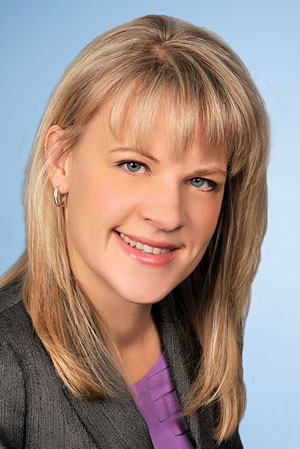 Kathryn Szymczyk
Kathryn Szymczyk, an Ottawa coach who specializes in business development for lawyers, has worked with many who were reluctant to do marketing. “Lawyers need a new mindset in this area,” she says. “They’re accomplished in the area of practising law and feel that should be enough. But lawyers can no longer wait for clients to knock on the door. They need to be more commercially minded, and they’re very resistant to it.”
Szymczyk shows these reticent rainmakers that they can apply the same problem-solving skills with which they practise law to the sales process. She works with them to re-frame the concept of sales — away from superficial self-promotion and schmooze — to a process of asking questions of a potential client to elicit the information they would need to solve their problem.
The approach, says Szymczyk, is “to figure out, in a very client-centric way, what the individual problems of their target audience are and then do personalized problem-solving, which is what really results in satisfied and loyal customers.”
One Szymczyk client, the head of the IP group at a full-service law firm, was well known in his sector. In fact, potential clients viewed him as being too busy with important cases to provide the kind of personalized attention they wanted.
The IP lawyer was planning to meet with an important potential software client. He told the coach, “I don’t want to appear too eager, like I want something from him. He had a real fear of looking like a sales person,” says Szymczyk. By the end of the coaching session, the coach had the lawyer viewing the client meeting from a new perspective. Wouldn’t the target client want the lawyer to appear eager and concerned about them and their needs? “Rather than putting off the client, that’s how the lawyer would set himself apart [from competitors],” she says.
Lawyers are taught never to ask a question to which they don’t know the answer. That’s a good rule for the courtroom, but not for a sales effort, says Szymczyk. Before the IP lawyer had the meeting, she did role-play with him, coaxing him to ask open-ended questions — “finding the software client’s pain points, which is an integral part of the sales process.” Too often, she says, lawyers open with a few pleasantries, then leap right into offering generic solutions before finding out what the target client really needs. The IP lawyer won the software client and went on to become an effective rainmaker.
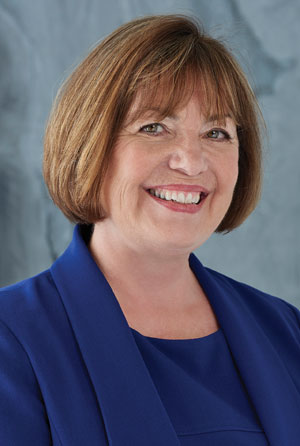 Linda Parsons
Linda Parsons, a Vancouver coach who specializes in business development for lawyers, has had clients who exhibited a strong desire to please others, a deep fear of failure and a high degree of perfectionism. One such client, who had all three traits, was a lawyer practising in family law and wills/estates in a medium-sized firm.
The lawyer was stressed because she wasn’t managing her time well and was bogged down in her files. She would rush to respond to the latest (or loudest) client inquiries, often at the expense of long-standing client obligations. Says Parsons: “She would procrastinate on non-urgent matters, which then became overdue — creating tensions with clients. She would fail to bill clients (or not bill effectively) because she felt guilty about how long matters had taken to complete.”
Although the client was a skillful lawyer with good interpersonal skills who attracted many clients, says Parsons, “she felt guilty and anxious that she was neglectful of both her clients and her family — a feeling of ‘failing everywhere.’” She had developed bad coping strategies such as surfing the Internet frequently during the day to distract and pacify herself.
This coaching engagement took 15 hours over 15 months. The first step was for the lawyer to do an audit of all her files. Over a series of intense weekends, she went through each of her files to identify where she was at — what had to be done, any urgent issues — and to create a prioritized plan of “next steps.” She bore down and finalized outstanding matters (such as reporting letters and billing) that had been left undone.
Parsons then encouraged the client to implement a new work regime. For the first three to four hours of her workday (for several days a week), the lawyer avoided emails and phone calls.
Instead, she concentrated on drafting (pleadings, report letters, agreements, etc.) to move files forward. (She ensured that her assistant would alert her to client or family emergencies.)
Then she revised her retainer letters (and talking points to new clients) to set realistic expectations about timing and outcomes. She also turned to a trusted colleague to help her complete her billings. The colleague was a lawyer familiar with her areas of practice who could objectively assess what amounts were fair and appropriate to bill. The client now received encouragement to her billing processes, whereas, previously, her perfectionism and guilt over delay had got in the way.
“Overall,” says Parsons, “the client made plenty of progress, cleared up some legacy issues and created systems to move forward effectively with her practice. She started to enjoy the practice again.”
From the client perspective
Most lawyers who go for coaching prefer to keep their engagements confidential.
Canadian Lawyer spoke with two who were willing to share their names and their experiences.
Charles Gluckstein, principal of Gluckstein Personal Injury Lawyers PC of Toronto, runs a law firm that he took over from his father. The firm has 30 employees, including eight lawyers.
When he wanted strategic coaching on how to manage the firm, he turned to Fred Pidsadny, president of Focus Management.
Pidsadny was the facilitator at the law firm’s annual staff retreats. In a series of monthly phone calls, says Gluckstein, “I would tell him some of the concerns I had in the business — marketing, staffing issues, strategic planning — stuff I felt I had no one, except my father, to talk to about.”
Pidsadny helped his client create a chart of the firm’s business metrics that he should monitor monthly. “I call them my Key Performance Indicators,” says Gluckstein. “We also were having management issues understanding the role of the different staff members. He helped me clarify the job duties and restructure the organizational chart in a way that made sense.”
Pidsadny, after coaching Gluckstein for three years, passed him on to a partner organization called CEO Global Network, which runs executive peer groups. Gluckstein has been active in it for five years. “You meet monthly with a group of other business leaders. They become almost like your board of directors.
“You also meet monthly, one on one for two hours, with your group leader. You review your KPIs with him, and he helps you strategize. He and I talk about where my firm is going to be in five years, what are the threats and how am I going to deal with them. For me, that has been a business education, almost like getting a business degree. I now really enjoy that part of the practice, running the operations.”
Tracy Corneau was senior partner in the trademark group of Borden Ladner Gervais LLP in Ottawa before her retirement last year. Her sessions with lawyer coach Kathryn Szymczyk started in 2014 as a BLG business development initiative and continued for two years.
Initially, Corneau met with her coach prior to attending business development meetings on the sidelines of international IP association conferences. The coaching helped her carve out more meaningful time with important clients rather than spreading herself too thin by trying to crowd in as many potential clients as possible. “She helped me to implement strategies and set specific goals,” says Corneau.
Szymczyk’s coaching significantly improved Corneau’s business development efforts. The coach’s methods translated into measurable results that the client could then present to BLG’s management. “I had to show how many new clients and new files I was able to attract,” says Corneau. “The results raised my profile within the firm and within the IP profession. They had tangible implications for compensation and leadership opportunities.”
Once the effectiveness of the BD coaching became apparent, Corneau had Szymczyk expand the scope to cover other aspects of her practice. “Kathryn’s coaching skills helped me focus my attention on the more important tasks, delegating more and becoming more organized and more accountable on those issues — and letting the rest go. I was no longer trying to be all things to all people.”
Says Corneau: “Coaching provides you with a safe place to examine and reflect on both yourself and others and explore opportunities and approaches you may not have considered. As a senior partner, I began to appreciate how the chance to examine and try on different perspectives and approaches led to the attainment of personal and professional-development goals.”

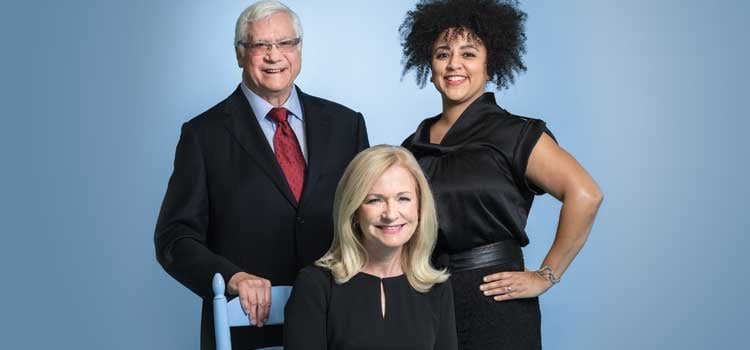
 Paulette Pommells, a Toronto coach, identifies empathy and a desire to share knowledge as positive lawyer qualities, but she has seen those traits sometimes carried to excess. “Law is a profession of helping people,” she says. “Many lawyers have an altruistic sense of wanting to help people and make a difference, but some lawyers suffer volunteer burnout if they’re helping too many people outside their paid practice.”
Paulette Pommells, a Toronto coach, identifies empathy and a desire to share knowledge as positive lawyer qualities, but she has seen those traits sometimes carried to excess. “Law is a profession of helping people,” she says. “Many lawyers have an altruistic sense of wanting to help people and make a difference, but some lawyers suffer volunteer burnout if they’re helping too many people outside their paid practice.” Ian Solomon, a Toronto lawyer coach who has been both a lawyer and an entrepreneur, contrasts the mindsets of the two vocations. Whereas entrepreneurs are serial risk takers, he says, most lawyers are risk averse. “They are trained to look at the downside of any proposition. They’re good at seeing obstacles to moving forward on any particular issue.”
Ian Solomon, a Toronto lawyer coach who has been both a lawyer and an entrepreneur, contrasts the mindsets of the two vocations. Whereas entrepreneurs are serial risk takers, he says, most lawyers are risk averse. “They are trained to look at the downside of any proposition. They’re good at seeing obstacles to moving forward on any particular issue.” Sheena MacAskill, a Toronto coach, has worked with, among others, senior lawyers who were perfectionists and often berated the students, juniors and secretaries producing work for them. “They might be making unreasonable demands and inappropriate comments, raising their voice or yelling in open areas where others were present,” she says. Typically, these kinds of clients are sent for coaching by managing partners in their firms. “‘Technically, you’re a good lawyer, and we want to keep you,’ the managing partner will say. ‘But we want you to adjust your behaviour. We want you to be more collegial.’”
Sheena MacAskill, a Toronto coach, has worked with, among others, senior lawyers who were perfectionists and often berated the students, juniors and secretaries producing work for them. “They might be making unreasonable demands and inappropriate comments, raising their voice or yelling in open areas where others were present,” she says. Typically, these kinds of clients are sent for coaching by managing partners in their firms. “‘Technically, you’re a good lawyer, and we want to keep you,’ the managing partner will say. ‘But we want you to adjust your behaviour. We want you to be more collegial.’” Kathryn Szymczyk, an Ottawa coach who specializes in business development for lawyers, has worked with many who were reluctant to do marketing. “Lawyers need a new mindset in this area,” she says. “They’re accomplished in the area of practising law and feel that should be enough. But lawyers can no longer wait for clients to knock on the door. They need to be more commercially minded, and they’re very resistant to it.”
Kathryn Szymczyk, an Ottawa coach who specializes in business development for lawyers, has worked with many who were reluctant to do marketing. “Lawyers need a new mindset in this area,” she says. “They’re accomplished in the area of practising law and feel that should be enough. But lawyers can no longer wait for clients to knock on the door. They need to be more commercially minded, and they’re very resistant to it.” Linda Parsons, a Vancouver coach who specializes in business development for lawyers, has had clients who exhibited a strong desire to please others, a deep fear of failure and a high degree of perfectionism. One such client, who had all three traits, was a lawyer practising in family law and wills/estates in a medium-sized firm.
Linda Parsons, a Vancouver coach who specializes in business development for lawyers, has had clients who exhibited a strong desire to please others, a deep fear of failure and a high degree of perfectionism. One such client, who had all three traits, was a lawyer practising in family law and wills/estates in a medium-sized firm.